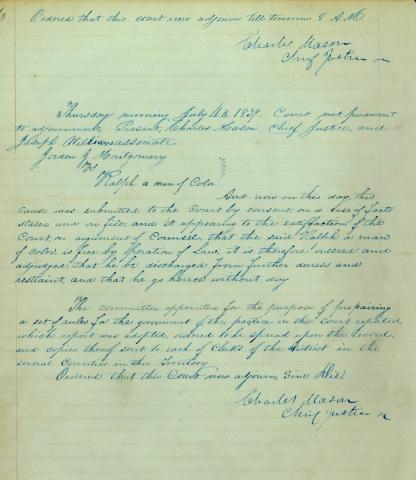
Description
This document is the written judgment from Iowa Supreme Court Chief Justice Charles Mason, who in 1839 ruled that a former enslaved man named Ralph would be "...free by operation of law; it is therefore ordered and adjudged; that he be discharged from further duress and restraint, and that he go hence without day." The background of the case was that Ralph was enslaved by Jordan Montgomery in Missouri, and in 1834, they agreed that Ralph would go to Dubuque, Iowa, to work in the lead mines. They also agreed Ralph would pay Montgomery $450.00 for his freedom but Ralph did not pay Montgomery, so the Missouri man came to Iowa to apprehend Ralph. The ensuing Supreme Court case found that Ralph was a free man and Montgomery could not "illegally restrain a human being of his liberty." The court rejected the argument that Ralph was a "fugitive slave," reasoning that by allowing him to leave Missouri and reside in a free state, Montgomery could no longer exercise any right over him in the Iowa territory.
The U.S. Supreme Court faced a similar question 18 years later when it decided the Dred Scott case. However, unlike the Iowa Supreme Court's ruling in Ralph, the U.S. Supreme Court decision maintained the rights of the enslaver and ordered the enslaved man returned.
Transcript of Iowa Supreme Court Ruling on Montgomery v. Ralph
Source-Dependent Questions
- Ralph was enslaved in Missouri, and in 1834, it was agreed that Ralph would go to Dubuque, Iowa, to work in the lead mines but Ralph would have to pay his enslaver $450.00 for his freedom. Discuss why Ralph would have to pay for his freedom. Was this fair? Why or why not?
- What evidence did Chief Justice Mason give when explaining his ruling?